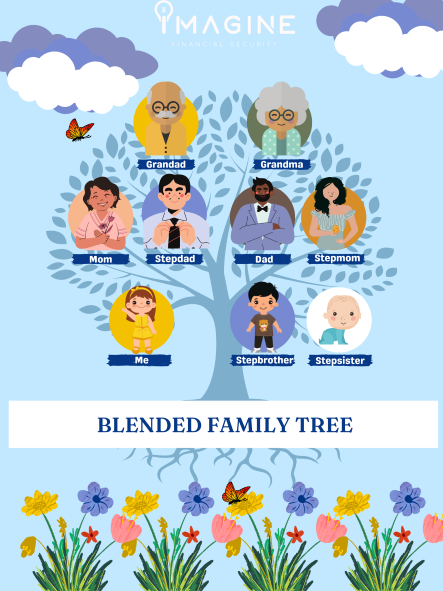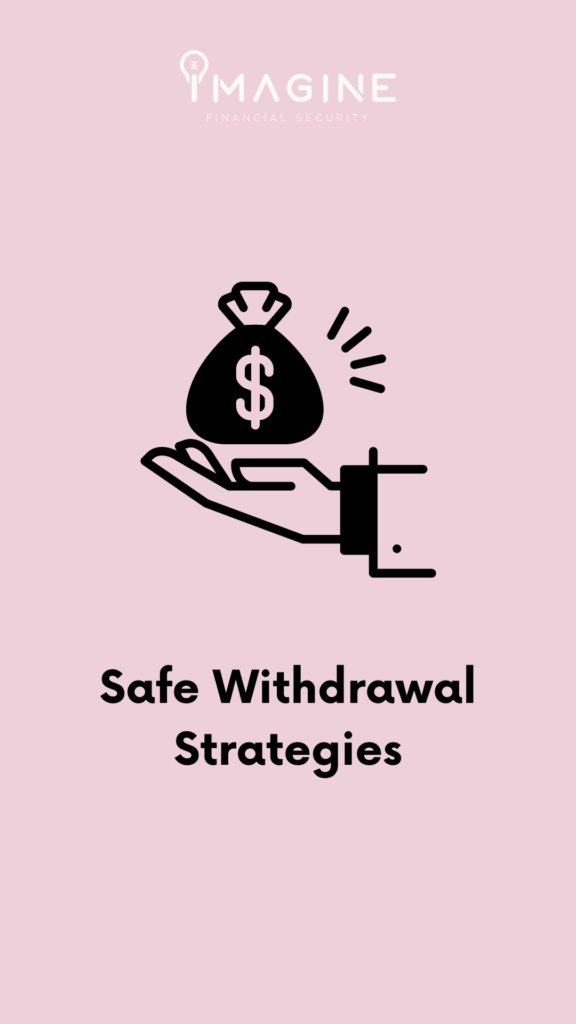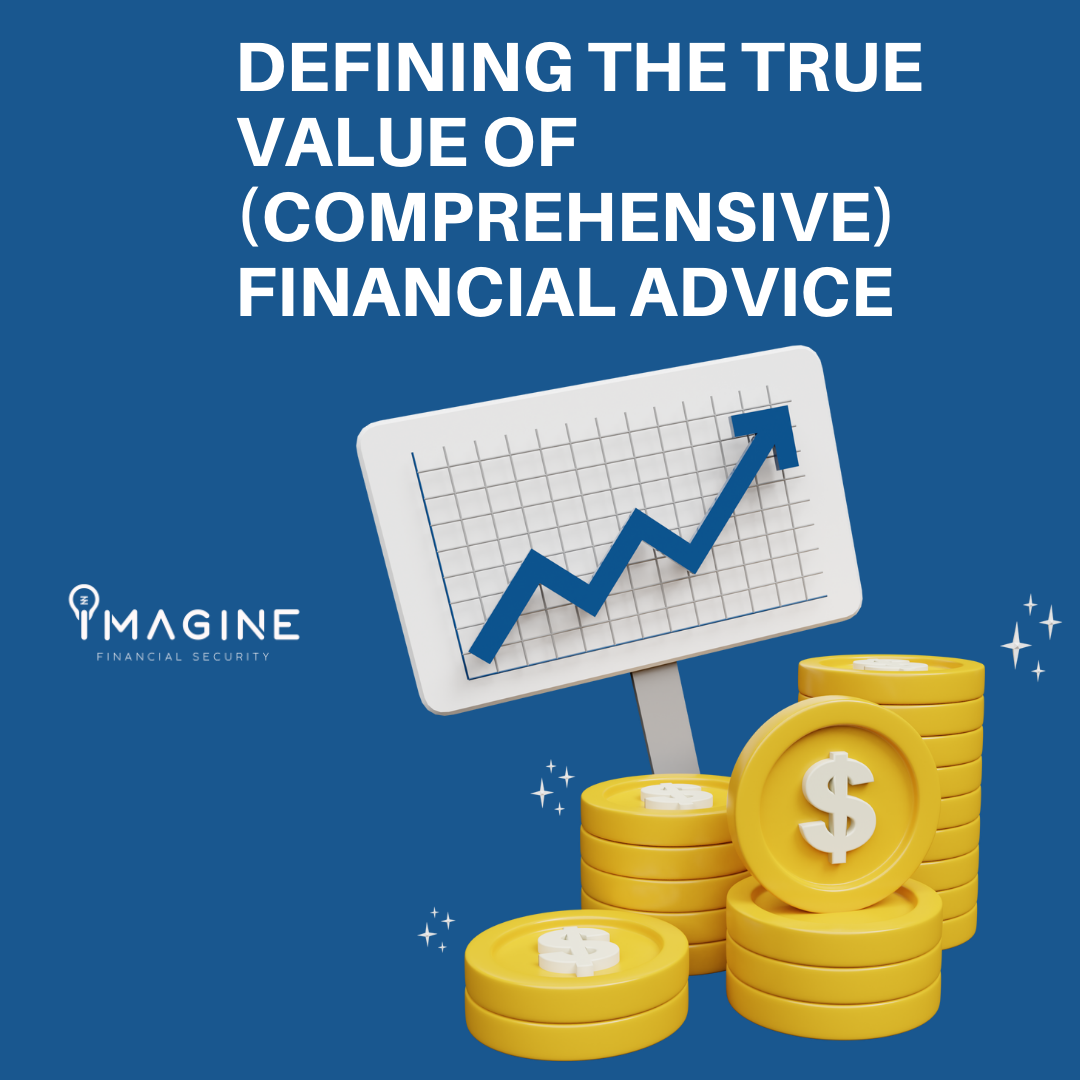Retirement Readiness Checklist
You are in the final stretch of your career!
Congratulations on a successful career! You’re in the proverbial 7th inning stretch, ready to finish strong and start the next chapter. Along with all of the excitement is a bit of uncertainty about the unknown. Use our updated “Retirement Readiness Checklist” to help you prepare for whatever is next!
Step 1: What is your vision for "retirement?"
The word retirement means different things to different people. Maybe you want to travel the world for the next 10 years. Perhaps you want to spend more time with loved ones. Or, you might have a business venture you’ve always wanted to pursue.
This is the most exciting part about retirement planning. You define what success means during this next chapter, not your current or former boss.
Write down your biggest hopes and dreams you wish to experience. If you are married, you and your spouse should sit down together to craft your vision. You will be surprised at how much you learn about one another! My wife and I do this on an annual basis, and I’m always learning new things about what’s on her heart and mind.
You should also decide whether you will work in any capacity during retirement. You might find yourself wanting to work part-time for the same company, or perhaps pursuing opportunities with a different firm.
This is also known as a phased retirement, where you “try it out” before fully retiring.
This is perfectly acceptable as it might be tough to quit your job cold turkey. It also provides some financial incentives including; delaying retirement account withdrawals, deferring Social Security, and continuation of group benefits.
You might decide not to work at all, and that’s okay too!
Perhaps you dedicate your time volunteering for a passion project that excites you!
Whatever it is, this is your time to create your ideal schedule, which brings us to step 2.
Step 2: Create an ideal day/week

Many people don’t realize that depression is more common than you think in your retirement years.
According to Web MD, over 6 million people over 65 are impacted by depression. However, only 10% receive treatment. One of the reasons is the feeling of embarrassment. Why would one feel depressed if they achieved financial independence?
Upon retiring, most people want to check off things on their bucket list. It might be a dream vacation, or moving into their forever home, buying a boat, etc. This can cause a spike in excitement in the early years which we call the “Go-Go Years.” However, as you enter the “Slow-Go” and “No-Go” years in retirement, that excitement fades and depression can begin to set in.
If routines or structure aren’t in place with how you are spending your time, and with whom, the feeling of losing purpose can have a negative impact on mental health.
Also, it’s more likely you have experienced the loss of a loved one or close friends.
How do you solve this issue?
Create an ideal day or week and decide:
- Who do you want to spend your time with?
- What are you spending time doing?
- Where are you living and whom are you living close to?
- Where are you traveling?
- What are some new hobbies you wish to start?
- What do you want to learn?
- What activities can you eliminate from your schedule? (preferably ones that are draining your energy)
This will help maximize your fulfillment in retirement and avoid that feeling of loneliness or isolation.
Step 3: Make a Budget

Stay with me on this one!
I know, nobody likes to make a budget. However, I find this exercise creates a ton of excitement around an otherwise mundane topic.
Make a list of anything that will cost money, but divide them into three separate categories:
- Needs
- Wants
- Wishes
Examples of NEEDS are:
- Housing
- Utilities
- Food
- Clothing
- Transportation
- Insurance
- Healthcare needs
A Quick "Aside" on The Housing Decision
Once you have decided on where you will be living in retirement, you will need to discuss whether or not you want to pay off your mortgage.
Having a mortgage in retirement isn’t necessarily a bad thing. It’s all about personal risk tolerance and liquidity needs.
If you are comfortable with taking on some risk with your investment portfolio, you could earn a higher return relative to the interest rate on your mortgage. All while keeping your investments liquid.
If you decide to pay off your home with a lump sum, how does that impact your liquidity needs? Sure, you could take out a home equity line of credit or cash out refinance, but your home is not truly a liquid asset.
As interest rates have been creeping higher, this debate has begun to lean slightly more in favor with paying off the mortgage. However, you might be locked into a 3.5% (or even better) interest rate, so keeping your funds liquid and investing in other asset classes could pay off in the long run.
With all that being said, there is a legitimate argument that having no debt in retirement provides a psychological benefit. I’m all about helping people with peace of mind, and if paying off the mortgage can help with that, let’s do it (forget the math)!
Aside from the mortgage issue, you are likely going to consider whether or not to stay in your current home, downsize, or even move to a new city. The conventional wisdom has been to downsize in retirement.
However, I have found that not having enough space in the home might limit your adult children and grandchildren’s ability to visit (if that’s important to you)! In other circumstances, I’ve had clients downsize and absolutely love the reduced maintenance and upkeep…but usually after the period of de-cluttering, selling, or giving away “stuff.”
Additionally, moving to a new city might sounds appealing given a lower cost of living or more favorable tax advantages, but it’s a big decision that should not be taken lightly.
If you do decide to either downsize or move to a new market, you will need to factor in how this will impact you financially in this first category of “needs.”

Examples of WANTS are:
- Travel
- Home Improvement
- Major Purchase (Boat, RV, Pool, Hot Tub etc.)
- Education funding (children or grandchildren)
- New Home
- Wedding
“Wants” could be reduced or even eliminated, if needed, during a period of unfavorable financial circumstances or as you begin to slow down.
Examples of WISHES are:
- Leaving a financial legacy
- Major gifting/donations
- Dream vacation home
Estimate each cost
I find most people know what their “needs” cost on a monthly or annual basis. However, certain expenditures in the “wants” or “wishes” categories might be more difficult to estimate.
Do your best. Remember, you can always revisit these on an annual or semi-annual basis, as we will discuss in Step 10.
And finally, tally up each category for your projected retirement income goal!
Step 4: How much of your retirement income will come from fixed sources?
The first pillar of your retirement income is your guaranteed or fixed income. These resources may include:
- Social Security
- Pension
- Annuities
- Employment Income
These sources are immune to market fluctuations, and you can rely on them for either a fixed period, or for life.
Social Security represents over 40% of retirement income for those over 65. Therefore, it’s important to make the right Social Security decisions. Some of the factors you might consider when choosing when to begin taking Social Security are:
- Age at retirement
- The earlier you retire, the longer you will need to wait until your full retirement age (between 65-67)
- Life expectancy
- If you have longevity in your family and are in good health, you might decide to delay Social Security past full retirement age. Age 70 is the latest retirement age where your benefit will be the highest.
- Another consideration if you are married is your spouse’s life expectancy. Even if you are not in great health, delaying benefits could help maximize the survivor benefit to your spouse.
- Other assets/income sources
- If you have other assets or income to draw upon early in retirement, you might consider delaying Social Security for the reasons mentioned above.
- However, if you need the income sooner to avoid draining your investment accounts, you might consider taking the benefit earlier (or working longer)
There is no “one size fits all” answer to taking Social Security. I wrote another article on Social Security considerations that you can read here, but I also recommend speaking to a qualified fiduciary financial planner to address this important issue. Of course, we can help with this 😊!
Step 5: Determine your income gap

What is a safe withdrawal rate for retirement?
Once you have calculated your total expenditures for your needs, wants and wishes, and have tallied up all your fixed income sources, it’s time for some basic math.
The first part to the equation is how much of your “needs” are covered by guaranteed income? If the answer is 100%, you are in great shape!
If it’s less than 100%, you will need to make the decision on how to draw income from your other assets like 401ks, IRAs, brokerage accounts etc., to fill the income gap.
It’s okay if your guaranteed income does not cover 100% of your needs. Most of my clients will draw income from investments to cover the income gap.
However, this brings about the question, “what is a safe and reasonable rate of withdrawal in retirement?”
A reasonable withdrawal rate is relative to your goals and risk tolerance, but anywhere from 3% – 7%/year could be reasonable. The higher the rate of withdrawal, however, the more risk of your plan failing. The lower the rate of withdrawal, the lower the risk of your plan failing.
Step 6: Make the decision on how your investments will be managed
Once you have determined the income gap, you will need to decide on the process of how investments will be managed. If you are a “do-it-yourselfer,” make sure you have a process in writing! This includes:
- What is your optimal asset allocation?
- Which investments will you use to create your optimal asset allocation?
- How often will you re-balance and monitor your accounts?
- How much will you withdrawal each month, quarter, or year?
- Which accounts will you withdrawal from first?
- The tax impact of withdrawals
- A process to determine which investments to liquidate and when
For the “do-it-yourselfers” out there. If something ever happened to you:
- Death
- Disability
- Incapacity
What is the contingency plan? Who is stepping in to fill that role? Is it a spouse? Adult child? Sibling?
Do they have the ability, AND the availability to step in as the new “investment manager?”
One of the primary reasons I find clients hire my firm or another fiduciary financial advisor is because they are the investment guru, but their spouse/son/daughter/sibling is not! Or, their children don’t have the time to take on this role given they are busy with their own family and career!
Therefore, my “do-it-yourselfers” want to be involved in the process of hiring a fiduciary financial advisor to help manage the affairs if/when something does happen to the them.
For those of you who have no interest or capacity, make sure you hire a fiduciary! A fiduciary is someone who looks out for your best interests, always! And yes, we can help you with this! Our firm specializes in retirement planning including investment management.
Step 7: What to do with your old 401k and employer benefits?
When you are implementing your investment strategy and income strategy, you will need to decide on how to best consolidate accounts.
Perhaps you have several 401ks or 403b plans. Maybe you have multiple brokerage accounts with different institutions.
You might consider consolidating accounts to simplify your balance sheet. I find most retirees want to avoid complexity!
By doing so, it will make managing your investments easier during retirement, particularly when it comes to making withdrawals.
It will also help clean things up for your beneficiaries or powers of attorney, and we will discuss this topic more in Step 8.
The argument against doing a 401k rollover might include:
– Plans to work past 72 and defer required minimum distributions
– Certain proprietary investments within an employer plan that are not offered elsewhere (fixed annuities etc.)
Otherwise, rolling over those plans into one consolidated IRA will open the door for more investment options and diversification. Additionally, you have more control over liquidity and fees within the investments you select.
Other Benefits to Consider
- Life Insurance
- 401k Contributions + Catch Up
- Health Insurance
- Legal Benefits
- HSA (Health Savings Account)
Reviewing the checklist of benefits you will lose is an important exercise when gauging your retirement readiness.
You should begin to think about how you will replace these benefits when you retire, and maximize these benefits while you are still employed.
For Life Insurance, consider whether you will want to own some life insurance in retirement. If so, purchase an individual policy that is portable after you retire. If you can’t buy an individual policy, see if you can extend coverage with the group for a period of time.
401k’s and 403b plans allow for catch up contributions after you turn 50. Take advantage of these catch up contributions while you can!
Here are the limits for 2022 on certain qualified plans:
- 401k/403b/457: $20,500/year + $6,500/year catch up
- SIMPLE IRA: $14,000/year + $3,000/year catch up
- IRA/Roth IRA: $6,000/year + $1,000/year catch up
- HSA: $3,650/year (single), $7,300/year (family) + $1,000/year catch up (age 55+)
In that final stretch of planning for retirement, your children might be done with school and you finally have some extra cash flow. Take advantage of this final decade as it can pay huge dividends in your later years when healthcare costs tend to rise!
For legal plans, you might consider having your estate documents reviewed and updated before you officially retire. These legal plans often have an estate planning benefit that can save you thousands of dollars while you are still employed.
Finally, consider health insurance options. If you are retiring and are eligible for Medicare, compare the Original Medicare with Medicare Advantage. Shop for plans, use a broker to help find you the best deal based on your medical needs.
If you are retiring before you are Medicare eligible, consider your options for health insurance. Perhaps your spouse will continue to work, or you may work during the early phase of retirement.
Otherwise, you may need to buy an individual policy on the exchange (healthcare.gov). These policy premiums are based on your income, so there could be some planning opportunities to keep your income low until you reach age 65 and qualify for Medicare.
Step 8: Update your Estate Plan, and keep it up to date!

How will your assets transfer to your loved ones? Who will step in to make decisions if you are unable to? How are your assets titled? What is the tax impact of the assets transferred to your beneficiaries? These are all questions that you need to consider for your Retirement Readiness Checklist!
The basic estate planning package that everyone needs includes:
- A Will
- Financial Power of Attorney
- Medical Power of Attorney
- Living Will/Advanced Medical Directive
Others might need to supplement these documents with a revocable living trust, an irrevocable trust, a special needs trust, or a marital bypass trust. Speak to a qualified attorney who specializes in estate planning in your state!
An Estate Plan, however, is not simply what documents you have drafted!
- Do you have three IRAs and two 401ks that can be consolidated into one? Do you have physical stock certificates in a safe that can be moved to electronic custody?
- Do your beneficiaries know where all of your life insurance policies are, or which financial institutions you have accounts with?
- What about passwords?
An estate plan is also about making things simple for your loved ones!
- Keep key decision-makers in the loop as to what their roles are (and are not)!
- If you name one adult child as Power of Attorney, have that discussion with them.
- If you have other children, make them aware also.
- It could be difficult, but you need to be the one to speak up on “why” you made certain decisions. Otherwise, it could impact how you were remembered and/or the relationships between your children.
- Finally, keep an “important document list” that outlines where your accounts are and at least one point of contact for each institution. (I have a template you can use, and I’d be happy to share it if you send me a Linkedin connection request asking for it!)
Step 9: Medicare or Healthcare Decisions
Are you 65 or older and eligible for Medicare? Well, make sure you take advantage of the special enrollment periods! That way, you can avoid penalties and unnecessary medical underwriting.
If you are eligible for Medicare, the primary decision is whether or not you will go with “Original Medicare” or Medicare Advantage.
Original Medicare is great because there is no “network” or managed care. You can pick and choose whatever specialists you want to see without worrying about a referral. The deductible is also extremely low (less than $300/year)! You will need to buy supplemental policies to cover prescriptions as well as gaps in Medicare part A and part B. Either way, it’s a great way to plan for how much your healthcare expenses might be.
Medicare Advantage has been growing in popularity, but sometimes people are misled into thinking it’s the less expensive route. If you are going to the doctor frequently, or have special medications, you might find yourself paying more for Medicare Advantage despite premiums being lower. Also, be sure to check out the network of providers as you may find your doctors don’t take certain insurance policies. If you are a snowbird, make sure the network is robust in both areas that you live.
There are some great independent Medicare advisors out there that I would recommend speaking with:
I interviewed the lead advisor for Chapter, Ari Parker, on one of my podcast episodes. Give it a listen for his insight on the topic:
Episode 13: Planning for Healthcare Costs in Retirement
If you are younger than 65 and not Medicare eligible, you are going to buy private coverage through the exchange. There are a variety of plans to choose from. The online marketplace is a great place to go to search for plans and screen for what features are most important to you.
Step 10: Make a Long-term Care Plan
I discussed this topic with Jean Wilke-Ausman, the Director of Long-term Care Solutions at Stewardship Advisory Group; she gave a phenomenal headline to kick this topic off.
“Why a checkbook is not a plan for long-term care.”
Just because you have the means financially to pay for long-term care expenses, does not mean you have a plan. Furthermore, just because you have insurance doesn’t mean your plan is complete.
Medicare doesn’t cover custodial care, so you will ether pay out of pocket, buy insurance, or some combination of the two.
Some considerations if you decide to self-insure:
- If you needed care, how would it impact your surviving spouse?
- How would it impact your financial legacy goals?
Jean also added these issues to consider when self-insuring:
- “Who is going to manage the liquidation of assets?”
- “What about considering market fluctuations while managing withdrawals for care?”
- “Who is going to manage the caregivers providing the custodial care?”
- “What about changes in the real estate market”
- “What about navigating taxes when liquidating certain assets?”
Perhaps your spouse has been managing your care for months or even years, and it’s now time to hire a caregiver. “Having insurance provides that liquidity need,” added Jean. “Having insurance can avoid you having untimely withdrawals from investments that have other purposes.”
Partner up with experts like a fiduciary financial advisor who understands long-term care planning, and someone like Jean who can be a quarterback to finding the right coverage.
There is no one-size-fits all with long-term care planning, but being proactive will help prevent you from becoming a burden on your loved ones later in life.
Step 11: Communication and Ongoing Review

Life will change! Your family will evolve! You will welcome new family members, and unfortunately say goodbye to others.
Make sure you continue to revise your plan. Keep your plan flexible.
Communication is important in all aspects of life, but particularly when it comes to dealing with issues in retirement. Active communication with your spouse, children, grandchildren, friends, work colleagues, neighbors, and other acquaintances, will help you stay connected during your retirement years.
It’s easy to unplug after retirement but staying involved with relationships can help you enhance your legacy well beyond how much you leave behind financially.
In the event of an unforeseen circumstance, it’s best for your loved ones to know who is in charge of what, and there is no question what your intentions are!
Nobody wants to leave a mess for their family to clean up, so keeping open lines of communication is paramount as we all go through the aging process.
Final word
I hope you found this information helpful.
Just remember, you are likely feeling a ton of excitement mixed with uncertainty. This is completely normal.
Our clients that have successfully retired started by planning early! If you aren’t technically starting to plan early, it’s okay too. My Mom loves to say, “better late than never!”
And guess what, planning doesn’t end the day you retire. Your plans will evolve and become more clear once you have more time and energy to think about the future. Therefore, continue to adapt and adjust based on what life throws at you.
Control what you can control, and the rest will fall into place.
Make sure to subscribe below so you never miss our retirement insights!
If you would like to schedule a Zoom with me to ask specific questions, you can access my calendar below.
Thanks for reading and I look forward to hearing your feedback along with suggestions for future topics! You can drop me a line at [email protected]

















